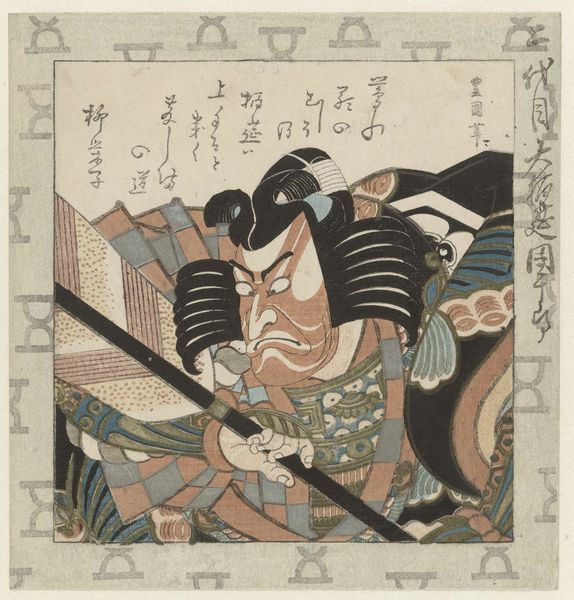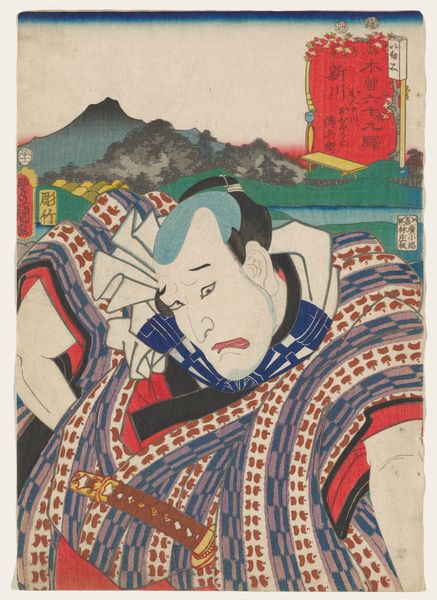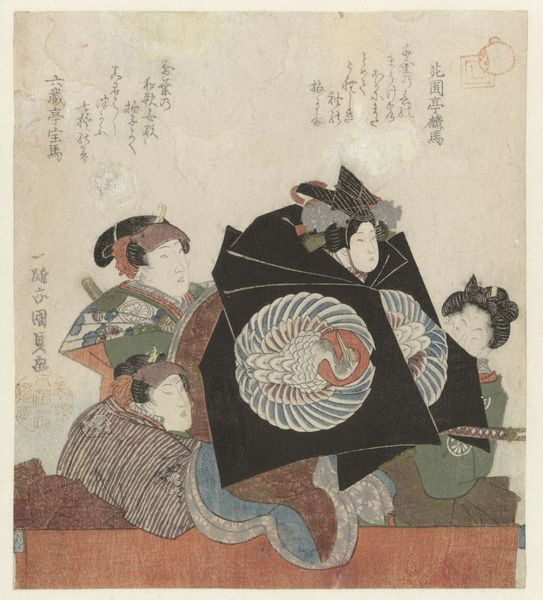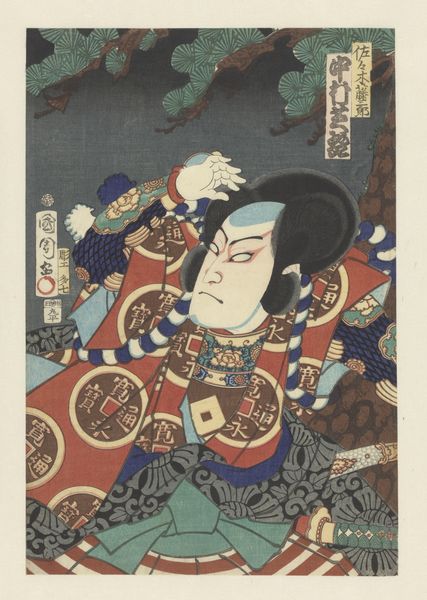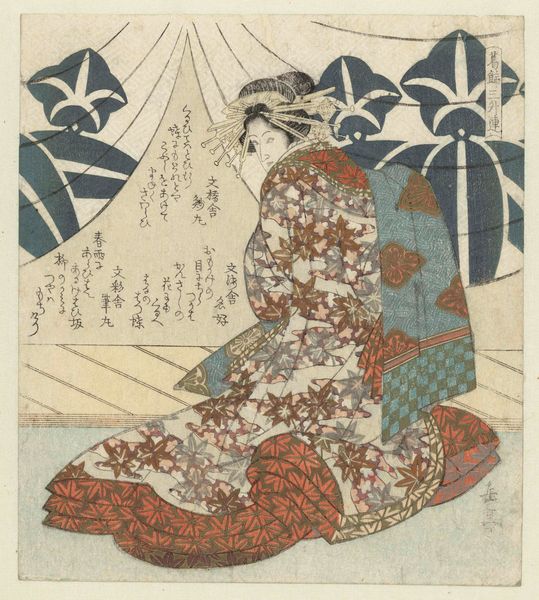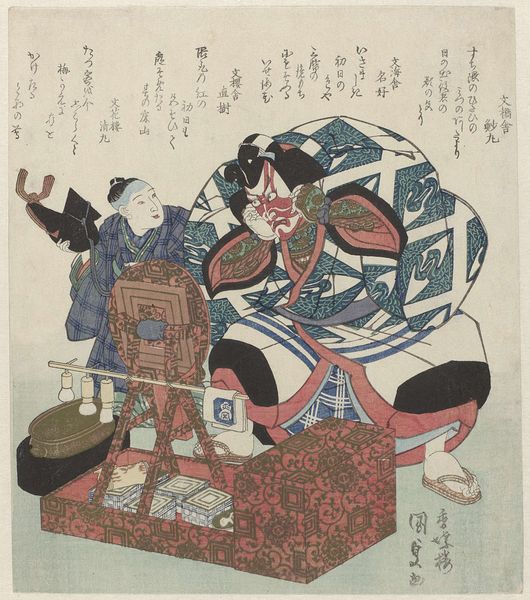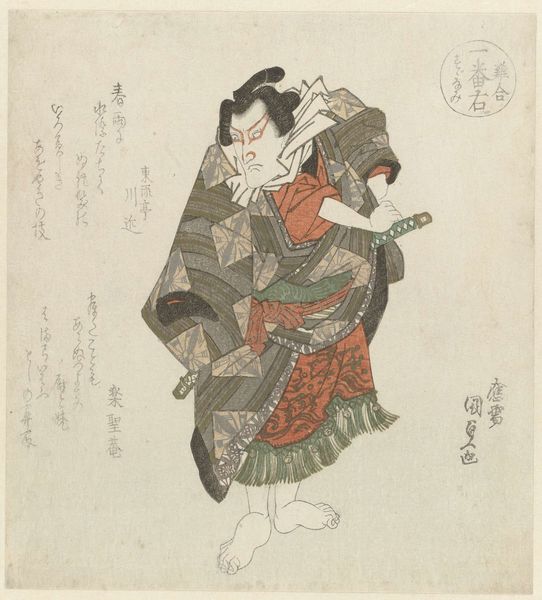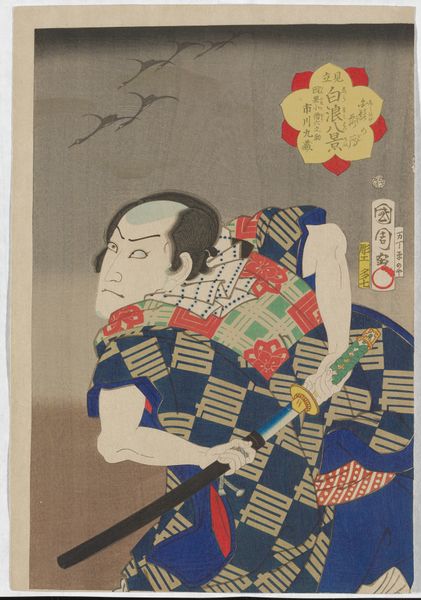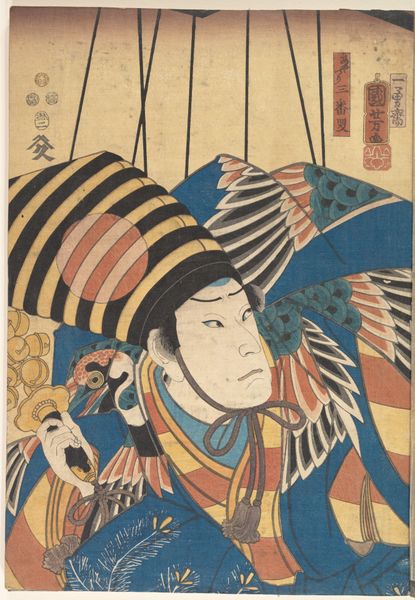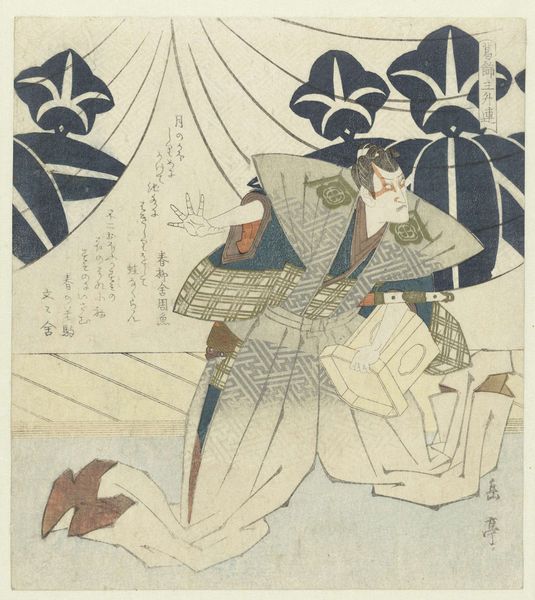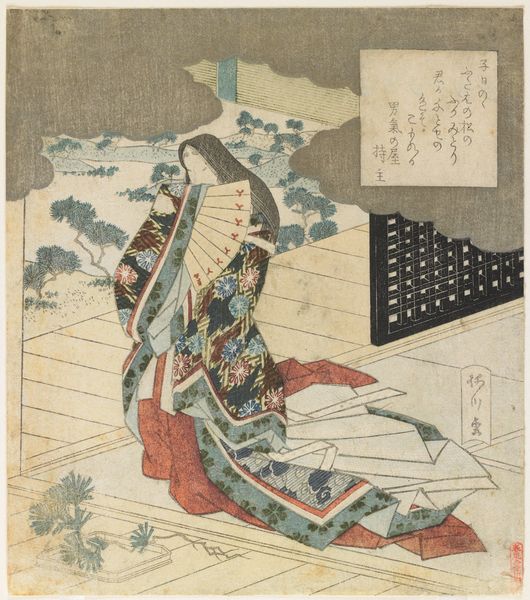
Ichikawa Danjuro IV in the Role of Kagekiyo in the Play Enlightenment from a Series of Portraits of Danjūrō 1824 - 1844
print, woodblock-print
portrait
water colours
narrative-art
asian-art
ukiyo-e
japan
figuration
woodblock-print
Dimensions: 7 x 6 3/4 in. (17.8 x 17.1 cm)
Copyright: Public Domain
Curator: Welcome. Before us is "Ichikawa Danjuro IV in the Role of Kagekiyo in the Play Enlightenment from a Series of Portraits of Danjuro," a woodblock print by Utagawa Toyokuni II, dating from sometime between 1824 and 1844. Editor: The exaggerated mask-like features immediately strike me as performative and unnatural, even theatrical. What story does this express through such carefully rendered construction? Curator: Indeed. The exaggerated features are a hallmark of kabuki theater prints, particularly those depicting "aragoto" roles characterized by bold, masculine energy. Note how the precise carving emphasizes the thick lines of the wig and costume. The stylized forms represent character more than individual identity. Editor: I'm intrigued by the visible layering in the print. You can see how different blocks contribute texture and color. Was this purely for visual effect or did it serve a purpose, thinking about the labor involved, or some symbolic distinction related to role and social class? Curator: It's fascinating to consider the labor. Each color required a separate block meticulously carved by artisans. The collaboration inherent in ukiyo-e production speaks volumes. The layering and choice of pigments created a surface valued by connoisseurs, indicating its quality and cost. We should note that its display could only occur with suitable environments and under stable lighting conditions to assure no colour fading and warping to such fine examples of artisanship. Editor: Looking at the way the clothing drapes and bunches—almost like heavy textiles in the way those areas capture subtle lighting or the texture that simulates the density of thread—suggests the quality of those costumes must have been extremely important, too. Not simply symbolic or aesthetic, but markers of the character's station or material conditions. Curator: Exactly. This interplay between illusion and material reality makes Utagawa's print a compelling demonstration. We have this art historical object to view because of this moment in theatrical history. Editor: It really brings together so many intricate details to communicate at a higher level beyond sheer pictorial aesthetics. Curator: I quite agree. Its combination of performative identity and sophisticated printmaking offers rich ground for exploration.
Comments
No comments
Be the first to comment and join the conversation on the ultimate creative platform.
